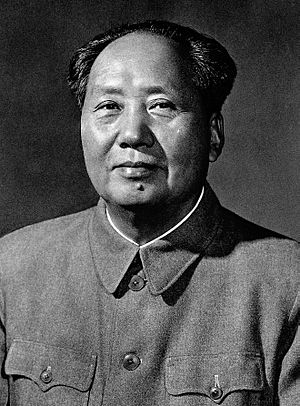Chairman of the Chinese Communist Party facts for kids
Quick facts for kids Chairman of the Central Committee of the Chinese Communist Party |
|
|---|---|

Flag of the Chinese Communist Party (1942–1996)
|
|

Emblem of the Chinese Communist Party (1942–1996)
|
|
| Central Committee of the Chinese Communist Party | |
| Style | Chairman (主席) (informal) Comrade (同志) (formal) |
| Member of | Politburo Standing Committee |
| Reports to | National Congress |
| Seat | Zhongnanhai, Beijing, China |
| Nominator | Central Committee |
| Appointer | Central Committee |
| Term length | Five years,
renewable with no-limit
|
| Constituting instrument | Party Constitution |
| Precursor | General Secretary (1921–1943) |
| Formation | 20 March 1943 |
| First holder | Mao Zedong |
| Final holder | Hu Yaobang |
| Abolished | 1 September 1982 |
| Deputy | Vice Chairman (1956–1982) |
| Chairman of the Central Committee of the Chinese Communist Party | |||||||
|---|---|---|---|---|---|---|---|
| Simplified Chinese | 中国共产党中央委员会主席 | ||||||
| Traditional Chinese | 中國共產黨中央委員會主席 | ||||||
|
|||||||
| Commonly abbreviated as | |||||||
| Chinese | 中共中央主席 | ||||||
|
|||||||
The Chairman of the Central Committee of the Chinese Communist Party (Chinese: 中国共产党中央委员会主席; pinyin: Zhōngguó Gòngchǎndǎng Zhōngyāng Wěiyuánhuì Zhǔxí) was the main leader of the Chinese Communist Party (CCP). This important role was created in 1945. It was later removed in 1982. The position was then replaced by the General Secretary.
Contents
History of the Chairman Role
The role of Chairman was first officially introduced in March 1943. Before this, Mao Zedong was already the main leader of the party. The CCP's national meeting in 1945 officially added the "Chairman of the Central Committee" role to the party's rules.
The Chairman was chosen by the Central Committee. This committee is a large group of important party members. The Chairman had a lot of power over the Central Committee and other key party groups.
Vice-Chairmen
In 1956, the party added the role of multiple Vice-chairmen. These were like deputies to the Chairman. Liu Shaoqi was the highest-ranking Vice-chairman for many years.
Later, in 1969, the party changed its rules to have only one Vice-chairman. This was done to give more power to Lin Biao, who was expected to take over from Mao. But in 1973, they went back to having several Vice-chairmen again.
Chairman's Power and Changes
The Chairman's power grew even more in 1975. The Chinese Constitution (the country's main law) stated that the Chairman of the CCP led all of China's armed forces. This meant the Chairman was the commander-in-chief of the army.
However, these changes were reversed in 1982. The new Constitution put the party below the government. It also created a separate government group to lead the army.
After Mao Zedong passed away in 1976, Hua Guofeng became the party Chairman. But by 1978, Deng Xiaoping became the most powerful leader in China.
By the 1980s, the CCP leaders wanted to make sure no single person could become as powerful as Mao had been. So, in 1982, they decided to get rid of the Chairman role. Most of its duties were given to the General Secretary position, which was brought back. Hu Yaobang, the last Chairman, became the General Secretary.
List of Chairmen
Chairman of the Central Politburo
| Portrait | Name (birth–death) |
Term of office | Ref. | ||
|---|---|---|---|---|---|
| Took office | Left office | Time in office | |||
 |
Mao Zedong (1893–1976) |
20 March 1943 | 19 June 1945 | 2 years, 91 days | |
Chairman of the Central Committee
| Portrait | Name (birth–death) |
Term of office | Ref. | ||
|---|---|---|---|---|---|
| Took office | Left office | Time in office | |||
 |
Mao Zedong (1893–1976) |
19 June 1945 | 9 September 1976 † | 31 years, 82 days | |
 |
Hua Guofeng (1921–2008) |
7 October 1976 | 28 June 1981 | 4 years, 264 days | |
 |
Hu Yaobang (1915–1989) |
29 June 1981 | 11 September 1982 | 1 year, 74 days | |
List of Vice Chairmen
| Term | Image | Name | Term | Chairman | Note | ||
|---|---|---|---|---|---|---|---|
| Term start | Term end | ||||||
| 8th CCP Central Committee |  |
Liu Shaoqi | 28 September 1956 | 1 August 1966 | 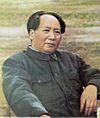 Mao Zedong |
In office until the Eleventh Plenary Session | |
 |
Zhou Enlai | 28 September 1956 | 1 August 1966 | ||||
 |
Zhu De | 28 September 1956 | 1 August 1966 | ||||
 |
Chen Yun | 28 September 1956 | 1 August 1966 | ||||
 |
Lin Biao | 25 May 1958 | 28 April 1969 | Elected at the Fifth Plenary Session | |||
| 9th CCP Central Committee | 28 April 1969 | 13 September 1971 † | The only party Vice-chairman | ||||
| 10th CCP Central Committee |  |
Hua Guofeng | 6 April 1976 | 6 October 1976 | 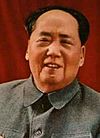 Mao Zedong ↓ 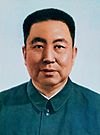 Hua Guofeng |
First Vice-chairman | |
 |
Zhou Enlai | 30 August 1973 | 9 January 1976 † | Died in office | |||
 |
Wang Hongwen | 30 August 1973 | 6 October 1976 | Arrested in 1976, removed from party | |||
 |
Kang Sheng | 30 August 1973 | 16 December 1975 † | Died in office | |||
 |
Ye Jianying | 30 August 1973 | 18 August 1977 | From October 1976 to July 1977, was the only Party Vice-chairman | |||
 |
Li Desheng | 30 August 1973 | 10 January 1975 | Resigned from his role | |||
 |
Deng Xiaoping | 10 January 1975 | 18 August 1977 | Elected at the Second Plenary Session. Removed from office due to events in 1976. Reinstated later. | |||
| 11th CCP Central Committee |  |
Ye Jianying | 18 August 1977 | 12 September 1982 | 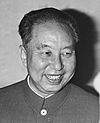 Hua Guofeng ↓ 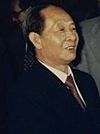 Hu Yaobang |
||
 |
Deng Xiaoping | 18 August 1977 | 12 September 1982 | ||||
 |
Li Xiannian | 18 August 1977 | 12 September 1982 | ||||
 |
Wang Dongxing | 18 August 1977 | 29 February 1980 | Resigned from his role | |||
 |
Chen Yun | 18 December 1978 | 12 September 1982 | Elected at the Third Plenary Session | |||
 |
Zhao Ziyang | 29 June 1981 | 12 September 1982 | Elected at the Sixth Plenary Session | |||
 |
Hua Guofeng | 29 June 1981 | 12 September 1982 | Elected at the Sixth Plenary Session | |||
See also
 In Spanish: Presidente del Comité Central del Partido Comunista de China para niños
In Spanish: Presidente del Comité Central del Partido Comunista de China para niños


